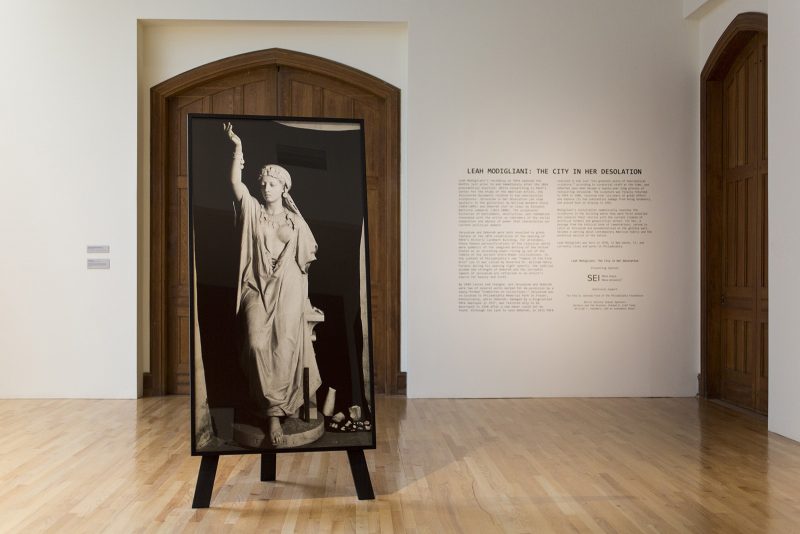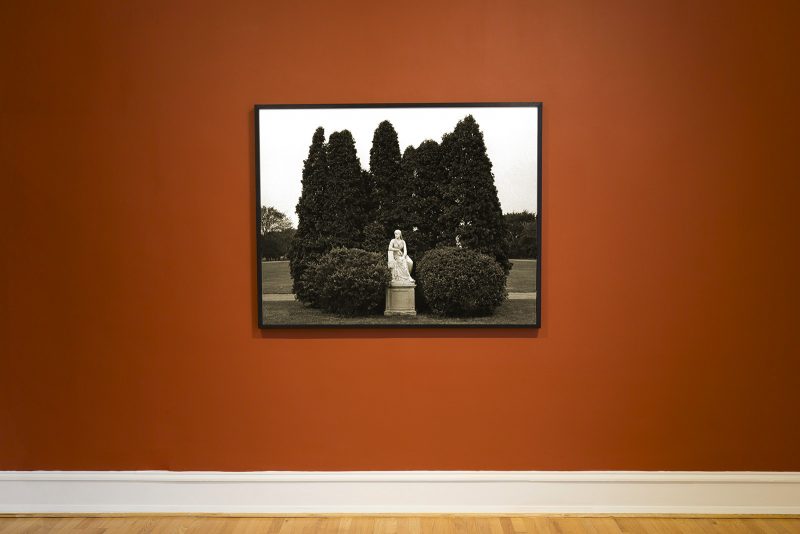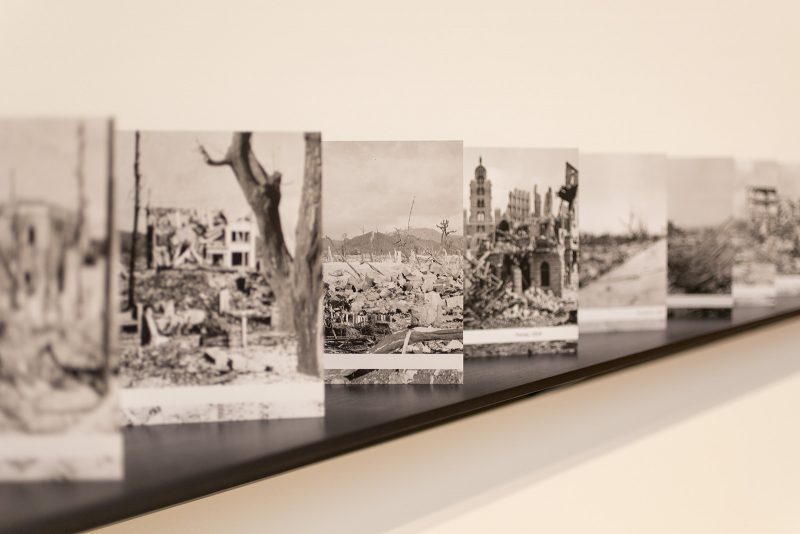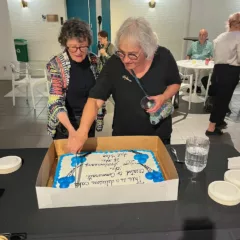Leah Modigliani’s The City in Her Desolation, on view at PAFA’s Morris Gallery through August 23, resonates powerfully in the present moment, as we debate how to interpret and what to do with the hundreds of Confederate monuments across the nation. Based on research in PAFA’s rich archives, Modigliani’s project assembles a compelling collection of archival fragments to tell the story of damage, destruction, and eventual resurrection of a pair of monuments.

Recounting the genesis of the exhibition, Modigliani described how she came across a note in PAFA’s archive about a now-lost nineteenth-century statue depicting the Biblical heroine Deborah that was “destroyed – summer 1950 – by order of Committee on Collections as being valueless to P.A.F.A. and damaged and not wanted by anyone else.” She asked herself how a sculpture could be deemed valueless–indeed, so valueless that it was destroyed. The question led her to discover another sculpture of a Biblical figure, the city of Jerusalem represented as a woman, whose history recalls Deborah’s, although Jerusalem survived destruction. These two sculptures of women and their stories of violence and neglect prompted a larger reflection on the destruction of cultural heritage and historical monuments in both the past and present.
The gallery’s biggest work is a monumental inscription incised on a temporary drywall wall as if on the pedestal of an invisible colossal grave stone. Thanks to the clear script and the shadows cast by ample lighting, the text is easy to make out: the first 2 verses from Chapter 1 of the Biblical Book of Lamentations, a lament for the destruction of the city of Jerusalem, embodied as a woman. “How does the city sit alone, when she was once so full of people? […] All her friends have betrayed her and have become her enemies.”

This is an English translation of the Latin text inscribed at the pedestal of William Wetmore Story’s white marble sculpture, “Jerusalem in Her Desolation” (1873), a photograph of which hangs on the adjacent wall, depicting the female embodiment of Jerusalem placed in a large park in Frazer, PA, where she was transferred from PAFA when she was deemed unwanted and unnecessary. Modigliani excavated the history of this sculpture, which was installed for the opening in 1876 of the historic Furness building. In 1949, the statue was exiled, only returning to PAFA in 1986. In 1992, after extensive restoration, “Jerusalem” was returned to PAFA’s permanent collection, and today the marble work sits alongside the monumental Benjamin West paintings in the second floor galleries.
“Jerusalem’s” story has a happy ending. Created in the same year and in the same Neoclassical style, Giovanni Battista Lombardi’s “Deborah” (1873) experienced a darker fate. Having been deemed “valueless,” the damaged white marble statue was banished to PAFA’s basement, where it was destroyed in 1950. All that is left of Deborah is an archival photograph, which Modigliani has printed at a large scale, framed, and placed on an easel-like structure in the center of the gallery. Like her ‘cousin,’ Jerusalem, Deborah is dressed in flowing Classical robes, her arm upraised as though speaking to a crowd. In the Bible, Deborah was a prophet who predicted the victory of her people over their enemies thanks to the actions of a woman.
Sadly, the destruction of this sculpture of an empowered female Biblical figure echoes the silencing of many women, fictional and real, throughout history and continuing today.

Connecting the damaged and destroyed monuments to living history, Modigliani offers a photo book that collages a series of black-and-white photographs depicting destroyed cities, from Richmond, VA, during the US Civil War, to Aleppo, Syria, today. The accordion-like book stretches 15 feet across the wall, a reminder of the repeated ugliness and devastation caused by conflict visited on cities (and their people).
At the center is a hauntingly empty landscape of Hiroshima after the detonation of the Atomic bomb, representing the worst of human destruction. To emphasize the scene’s uncanniness, Modigliani mirrored a single image of Hiroshima, placing the simple form of a shinto gate at the center of the composition. The overall effect of this collage is a visual lament, paralleling the textual lament on the other side of the gallery: “She weeps alone a night with tears upon her cheeks, all her lovers are gone and none can comfort her.”
The City in Her Desolation is not only a lament for the destruction of cities and people in the past, but also for the current state of violence against people across the world. Modigliani’s critique of violence and destruction offers hope that through confronting the contested past we can create a better present and future.
The City in Her Desolation, Pennsylvania Academy of the Fine Arts, June 8 – August 23, 2017









